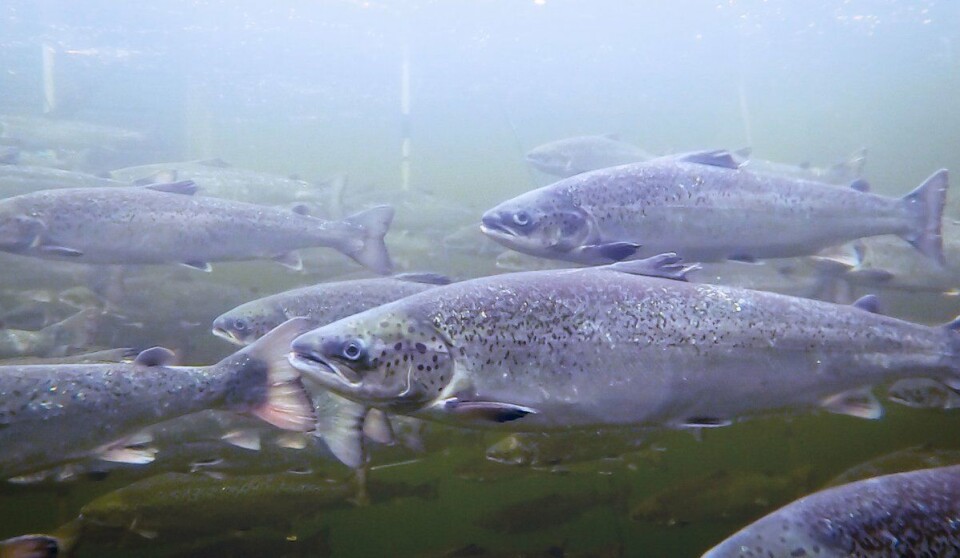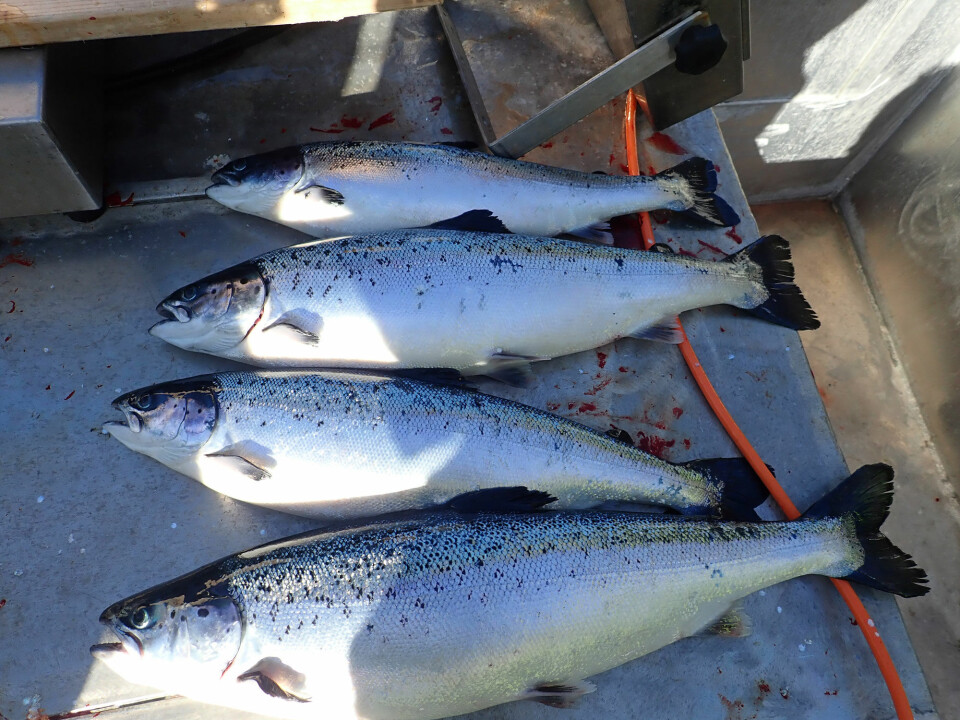
Researchers confirm shortcomings of triploid salmon
The fish have reduced welfare and an increased risk of disease. In addition, a smaller proportion have high quality at harvest, according to Norway’s Institute of Marine Research.
Triploid salmon are the result of ova being exposed to pressure, which gives the fish an extra set of chromosomes (three instead of two) that makes them sterile.
If the fish escape from a net pen, they cannot genetically contaminate wild salmon. But that security has anecdotally come with several disadvantages that have been confirmed by researchers who have studied triploid fish in experiments and data on a generation produced in commercial farms.
The results of experiments carried out with the production of such fish on a small scale showed that triploid salmon did well under these conditions, but not as well as standard fish.
10 million in generation
“Although the mortality rate was very low in these experiments, it was still statistically higher in the triploids than in the normal diploid fish,” said IMR researcher Lars Helge Stien in an article on the Institute’s website.
The commercially farmed generation, which has now been carefully examined, was released into the sea in 2020. Over 10 million fish from nine hatcheries were distributed among 10 farming locations and followed through the production cycle.
One of the results the researchers can see is that the farmers adapted to the extra animal welfare needs to triploids throughout production.

Reducing risk
“We see that the fish health personnel at the facilities have registered poorer welfare and health in the triploid fish, and that they have introduced measures to reduce the risk for these fish groups,” said Stien.
Handling fish in connection with lice removal is known to give the fish extra stress and risk of being injured.
“Fasting before handling is a common method to increase the fish’s tolerance. We see that the triploid fish has been fasted longer than the normal salmon before handling, and that extra precautions were typically taken for this fish,” said Stien.
Hungrier fish
The results also showed that the triploid salmon consumed more feed than normal farmed salmon, said Stien.
In addition, for welfare reasons, triploids were harvested earlier and thus at a lower weight than normal salmon, and a larger proportion of the fish were classified as lower quality.
“In addition, the triploid fish need slightly different food than normal farmed fish - therefore they have been given specially prepared feed, which is also a cost driver in addition to the welfare challenges,” said Stien.
Read more on the research here.





















































